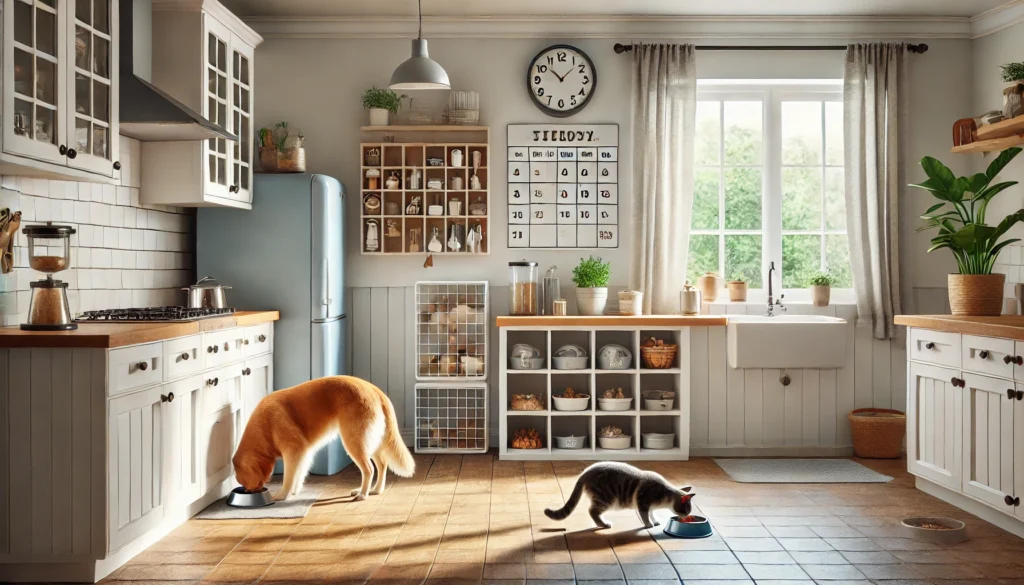A well-structured daily routine doesn’t just make life easier for pet owners — it also creates security, reduces anxiety, and boosts your pet’s overall well-being. Whether you have a dog or a cat, establishing predictable habits helps them thrive indoors.
Veja como montar uma rotina simples, saudável e equilibrada para o seu pet dentro de casa.
Start the Day With Calm Interaction
Morning sets the tone for the entire day.
- Greet your pet calmly with gentle words or light petting.
- Offer fresh water and take your dog outside first thing, or clean the litter box for your cat.
- Avoid overstimulation early in the day — ease into activity.
This helps your pet transition from rest to wakefulness with confidence.
Feed at Consistent Times
Consistent feeding times teach pets when to expect food, which prevents begging and overeating.
- Feed adult dogs and cats twice a day — once in the morning, once in the evening.
- Remove uneaten food after 15–20 minutes to prevent snacking or spoilage.
- Use food puzzles to make mealtime more engaging.
Regular feeding times support digestion and emotional balance.
Schedule Exercise and Play
Indoor pets need physical and mental stimulation to stay healthy and happy.
- Schedule at least two dedicated play sessions per day (10–20 minutes each).
- Use different toys to engage different senses — fetch, laser pointers, tug toys, feathers.
- Walk dogs outside or use hallway fetch and stair play for movement indoors.
Routine play helps burn energy and reduces boredom.
Include Short Training Sessions
Daily mental challenges build confidence and improve behavior.
- Practice simple commands or tricks like “sit,” “stay,” or “high five.”
- Use treats, praise, and short 5–10 minute sessions.
- Mix new training with reinforcing old skills to keep it fun.
Training stimulates the mind and strengthens your bond.
Incorporate Quiet Rest Periods
Downtime is essential, especially after meals or play.
- Let your pet nap in their favorite spot without disturbance.
- Avoid loud noises or forced activity during rest times.
- Respect their natural rhythms — especially for senior pets.
Calm periods balance the day and support healthy energy cycles.
Provide Evening Calm
Winding down helps pets sleep better through the night.
- Offer low-energy play or grooming in the evening.
- Feed dinner early enough to allow digestion before bedtime.
- Keep lighting dim and the environment quiet before sleep.
A relaxed end to the day signals safety and stability.
Use Visual or Verbal Cues
Pets learn routines quickly through signals.
- Use phrases like “bedtime,” “walk,” or “treat time” consistently.
- Combine sounds with gestures (picking up the leash, opening treat containers).
- Praise your pet when they anticipate the next step correctly.
Routines give pets confidence and reduce stress from unpredictability.
Adjust to Your Pet’s Needs
Not all pets need the same routine.
- Puppies, kittens, and seniors may need more rest or more frequent meals.
- High-energy breeds may need longer play sessions.
- Shy or anxious pets may benefit from slower transitions between activities.
Tailor your schedule based on your pet’s age, temperament, and energy.
Creating a daily routine isn’t about rigidity — it’s about creating comfort and rhythm in your pet’s life. A reliable structure builds trust, minimizes anxiety, and makes every day more harmonious for both of you.






